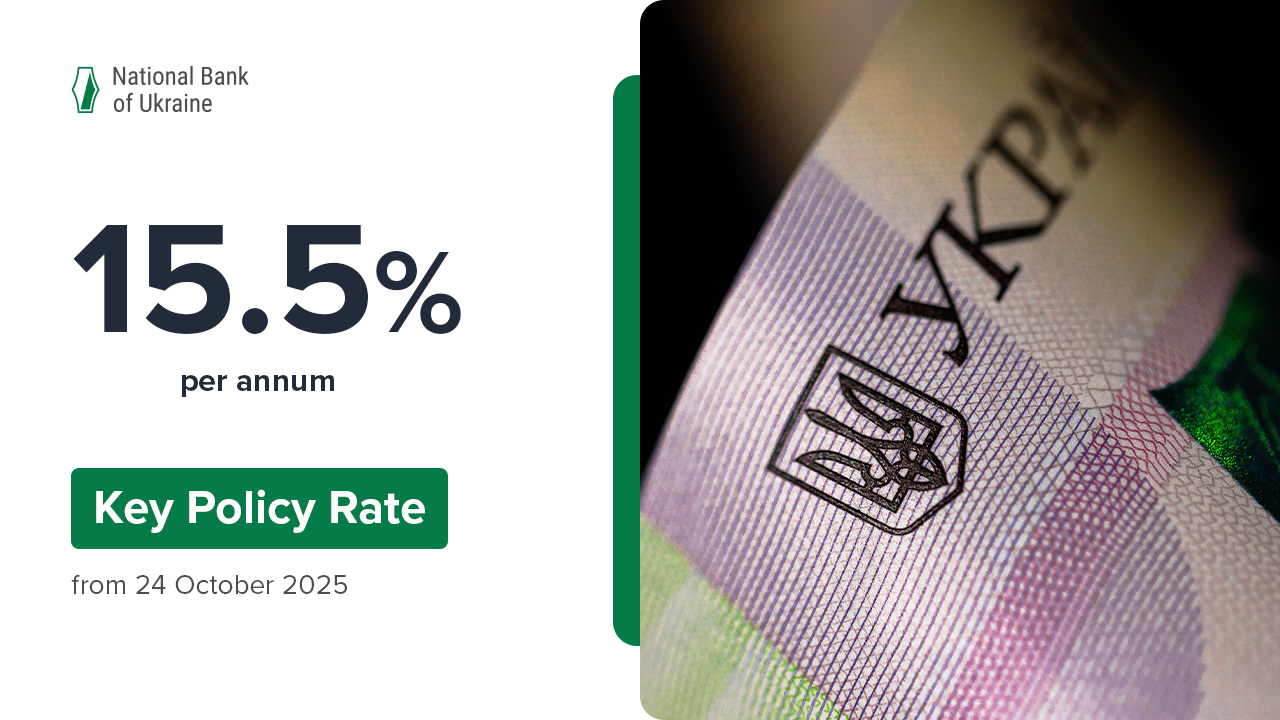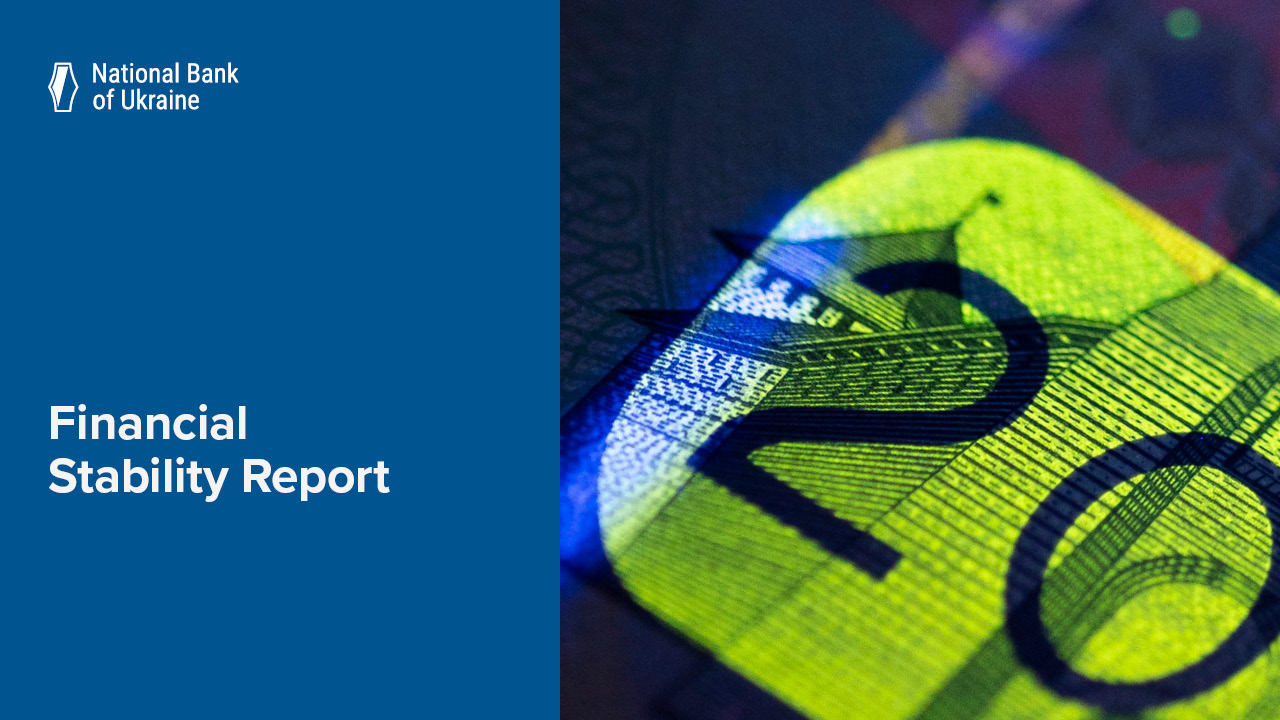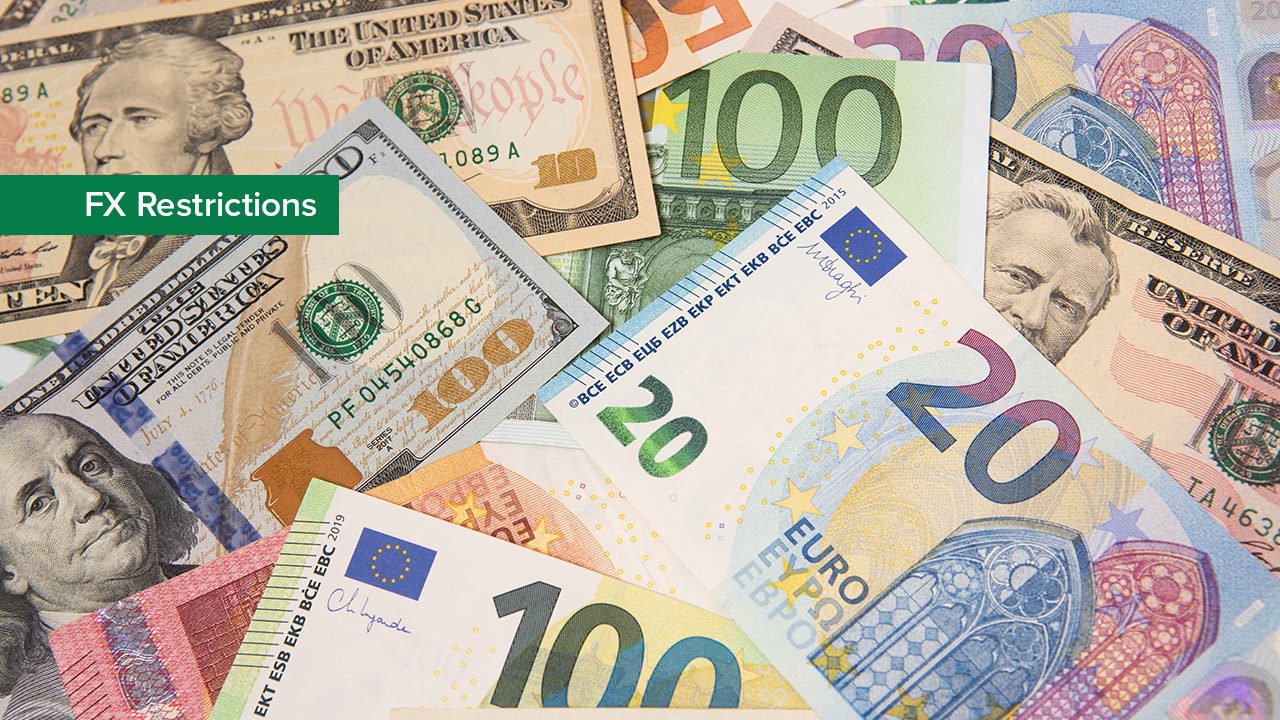Meeting date: 4 June 2025.
Attendees: all 11 members of the Monetary Policy Committee (MPC) of the National Bank of Ukraine:
- Andriy Pyshnyy, Governor of the National Bank of Ukraine
- Kateryna Rozhkova, First Deputy Governor
- Yuriy Heletiy, Deputy Governor
- Yaroslav Matuzka, Deputy Governor
- Sergiy Nikolaychuk, Deputy Governor
- Dmytro Oliinyk, Deputy Governor
- Oleksii Shaban, Deputy Governor
- Pervin Dadashova, Director, Financial Stability Department
- Volodymyr Lepushynskyi, Director, Monetary Policy and Economic Analysis Department
- Oleksandr Arseniuk, Director, Open Market Operations Department
- Yuriy Polovniov, Director, Statistics and Reporting Department.
The MPC members discussed the main drivers of the current price increase, the prospects and risks for price developments going forward, as well as the monetary conditions necessary to return inflation to a sustainable downward trajectory leading to the 5% target
In spring, inflation was expected to exceed 15% in annual terms. According to preliminary estimates (available at the time of the MPC meeting), inflation in May outran the forecast trajectory (April 2025 Inflation Report) primarily due to the impact of adverse weather on early-crop yields. Underlying inflationary pressures were estimated to be close to expectations, but still quite persistent amid robust consumer demand and high costs to businesses of raw materials and labor. In May, inflation reached its peak for the year, by NBU estimates.
Inflation expectations remained fairly sustainable. This was in part made possible by the steps to tighten monetary policy that the NBU took previously that stimulated interest in hryvnia instruments and restrained households’ net demand for foreign exchange. This supported the sustainable situation in the FX market and, coupled with the preserved regularity of external aid inflows, propelled international reserves to a record of almost USD 47 billion in April and kept them at a fairly high level in May.
A better situation in the energy sector than last year also restrained price pressures. The absence of power shortages in Q2 met the NBU’s expectations, and gas production revived faster than anticipated following russian aerial strikes. In addition, price pressures moderated in the EU’s wholesale markets from which Ukraine imports electricity. A slowdown in producer price growth has already reflected these developments.
Given the high base of comparison (including for administered prices) and the anticipated expansion of food supply (thanks to both new harvests and imports), inflation is likely to decline in the coming months. To sustain this cooling, however, it is necessary to maintain the right monetary conditions.
MPC members unanimously supported keeping the key policy rate at 15.5% in June
Such a decision provides the appropriate monetary conditions for reversing the inflationary uptrend and is prudent given the current conditions and balance of risks, according to the participants in the discussion. On the one hand, risks that the supply of raw food products poses to price developments have intensified and actually managed to partially materialize. On the other hand, this inflation surge is highly likely to be temporary, inflation expectations are sustainable, and core inflation is running slightly below the trajectory of the April forecast. The continued sustainability of the FX market and the brisk increase in demand for hryvnia assets in previous months are evidence that the NBU’s earlier measures were adequate and that their impact will persist and help slow inflation in the future.
One of the pro-inflationary factors is the strengthening of the euro against the U.S. dollar (and thus against the hryvnia), which is having a significant impact on the prices of many imported items, several participants said. What is more, food prices have already reflected the insufficient precipitation and cold snaps this past spring. The persistence of adverse weather may lead to more significant crop losses than currently anticipated, and consequently to a slower decline in food inflation in H2. Prices had already risen more than 10% yoy for over half the consumer basket in April–May, potentially negatively affecting future developments in inflation expectations. In addition, although the abolition of “visa-free trade” with the EU will contribute to a disinflationary effect on food prices, such an impact will probably be relatively short-lived, one of the participants in the discussion said.
Geopolitical tensions and uncertainty about the format of support for Ukraine are running high, while russia’s demeanor in the negotiations exposes its desire for further escalation, another participant added. This elevates the risk of more damage to production and logistics infrastructure and of having to expand the budget deficit to fight back against armed aggression. Higher inflationary risks are likely to require appropriate monetary conditions to maintain macrofinancial sustainability.
Several participants in the discussion said there is currently no sufficient reason to tighten the NBU’s interest rate policy.
A significant amount of public attention is now focused on adverse weather conditions and their impact on this year’s harvests and food prices, one MPC member said, but this is not reason enough to doubt the projected slowdown in food inflation in H2. First, the adverse effects of the spring frosts will be partially offset by farmers’ efforts to replant crops. The situation with soil moisture has also improved. Second, last year’s comparison base is high, and food prices in Ukraine are already as close as possible to foreign prices (primarily those in Poland). This limits the potential for food price increases thanks to the possibility of replacing domestic products with imports. Third, rising prices will also be restrained, at least for the time being, by the expansion of food supply as some of the exports are rerouted to the domestic market following the termination in early June of the preferential trade regime with the EU.
Several other participants in the discussion agreed with this and highlighted a number of other indicators potentially pointing to an upcoming reversal of the inflation uptrend. Despite the growth in inflation in annual terms, seasonally adjusted monthly increases in inflation are showing a tendency to die down, these MPC members noted. The pass-through effects of the hryvnia’s weakening against the dollar last year and of the increase in electricity prices for businesses have almost faded, according to these MPC members. They said it reinforces their confidence that inflation will begin to slow in June already, and that this tendency will continue across a wide range of goods and services.
A steady disinflationary trend should be shaped by the sustainability of economic agents’ inflation expectations, which remain significantly lower than the current rate of inflation, another MPC member said. The early results of a business outlook survey indicate an improvement in the short-term inflation expectations of businesses in Q2 2025. Financial analysts remain confident that the inflationary surge is temporary. Their consensus expectations for inflation at the end of 2026 fluctuate around 6%–7% yoy, a number of surveys show. It is likely that inflation expectations will improve as inflation gradually declines.
Another participant in the discussion agreed, but said that changes to inflation expectations are shaped not only by personal perceptions and news about current inflation, but also primarily by developments in the FX market. And so the NBU should maintain an active presence in the FX market and continue to ensure moderate two-way fluctuations in the exchange rate. Ukraine’s international reserves remain high, and the risk of external financing being insufficient this year is low, meaning the NBU is highly capable of compensating for an FX deficit in the private sector and maintaining a sustainable situation in the FX market to keep expectations under control and restrain price pressures.
An important safeguard against the unfolding of adverse trends in the FX market should also be the continued maintenance of strong demand for hryvnia assets, this MPC member said. Keeping hryvnia savings instruments sufficiently attractive will curb FX demand and consequently reduce pressure on the hryvnia exchange rate, which will be especially relevant in H2, when the effect of seasonal factors usually intensifies.
Surveys show that most respondents – both experts and non-experts – consider the current level of the key policy rate to be sufficient to counteract price pressures, and that they see no need to tighten interest rate policy at this time, another participant added. Keeping the key policy rate unchanged will therefore cause no additional turbulence in financial markets. Banks have responded appropriately to the NBU’s incentives, this MPC member said. The effects of previous steps to tighten monetary policy will remain an important factor in containing price pressures.
Two MPC members added that holding the key policy rate unchanged under current conditions allows the NBU to continue to adhere to the principles of flexible inflation targeting while keeping a prudent balance between the goals of ensuring price stability and supporting the economy. Previous steps to raise the key policy rate helped restrain price pressures, but did not have a significant adverse impact on lending. Specifically, thanks to vibrant competition among banks for large and medium-sized borrowers, interest rates on new loans to businesses have in general increased only marginally (more modestly than expected from the typical response) and remain at pre-Covid-19 levels. Banks’ loan portfolios continue to surge, and it is important to maintain this momentum, given the slowdown in the economy and the cooling of investment activity amid increasing russian attacks.
The discussion participants agreed that although price growth likely reached its local peak in May, the further slowdown in inflation may turn out more restrained than projected by the April macro forecast. When revising the forecast in July, the NBU will thoroughly analyze the impact of all the factors noted above on inflation developments. This will address the question of whether it is feasible to continue to follow the key policy rate trajectory laid out in the April macro forecast.
MPC members currently assume that a return to the easing of interest rate policy will occur in H2 2025, but that the balance of risks implies that such steps should be more cautious than previously expected
The participants in the discussion said they anticipate the NBU will be able to resume the cycle of key policy rate cuts after the price surge has peaked and the threat of inflation settling at high levels has been eliminated.
Given the current inflationary developments and rather high risks associated primarily with the consequences of the war and the impact of bad weather on harvests, most MPC members did not rule out that the NBU may have to keep the key policy rate at the current level for longer and/or cut it more slowly than projected in the April macro forecast. Several MPC members also said that in the event of intensified risks to a sustainable reduction of inflation to the 5% target, the NBU should be ready to tighten monetary policy further.
The Monetary Policy Committee (MPC) is an NBU advisory body that was created to share information and opinions on monetary policy formulation and implementation, in order to deliver price stability. The MPC comprises the NBU Governor, NBU Board members, and directors of the Monetary Policy and Economic Analysis Department, Open Market Operations Department, Financial Stability Department, and Statistics and Reporting Department. The MPC meets the day before the NBU Board meeting on monetary policy issues.
Decisions on monetary policy issues are made by the NBU Board.







